EarthCARE is launched
Wednesday, 29 May 2024 04:30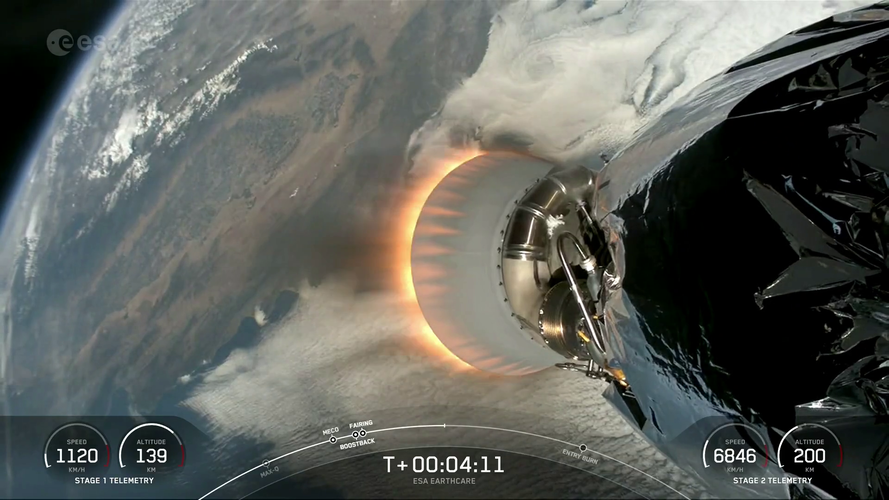 Video:
00:11:00
Video:
00:11:00
ESA’s EarthCARE satellite lifted off on a SpaceX Falcon 9 rocket from the Vandenberg Space Force Base in California, US, on 29 May at 00:20 CEST (28 May, 15:20 local time).
Developed as a cooperation between ESA and the Japan Aerospace Exploration Agency (JAXA), the Earth Cloud Aerosol and Radiation Explorer satellite carries a set of four instruments to make a range of different measurements that together will shed new light on the role that clouds and aerosols play in regulating Earth’s climate.
Replay: EarthCARE launch coverage
Wednesday, 29 May 2024 04:00 Video:
02:15:00
Video:
02:15:00
Watch the replay of the EarthCARE launch coverage. The video includes streaming of the event at ESA’s European Space Operations Centre in Germany and footage of liftoff from the Vandenberg Space Force Base in California, US.
EarthCARE was lofted into orbit on a SpaceX Falcon 9 rocket on 29 May at 00:20 CEST (28 May, 15:20 local time).
Developed as a cooperation between ESA and the Japan Aerospace Exploration Agency (JAXA), the Earth Cloud Aerosol and Radiation Explorer satellite carries a set of four instruments to make a range of different measurements that together will shed new light
Taking EarthCARE into orbit
Wednesday, 29 May 2024 04:00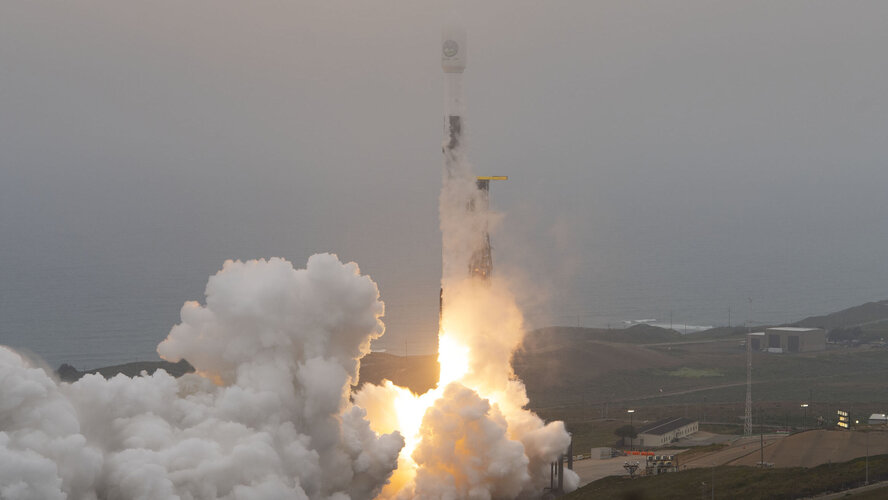 Video:
00:02:36
Video:
00:02:36
ESA’s EarthCARE satellite lifted off on a SpaceX Falcon 9 rocket from the Vandenberg Space Force Base in California, US, on 29 May at 00:20 CEST (28 May, 15:20 local time).
Developed as a cooperation between ESA and the Japan Aerospace Exploration Agency (JAXA), the Earth Cloud Aerosol and Radiation Explorer satellite carries a set of four instruments to make a range of different measurements that together will shed new light on the role that clouds and aerosols play in regulating Earth’s climate.
ThinkOrbital developing satellite repair toolkit with X-ray vision
Wednesday, 29 May 2024 01:00

EarthCARE launched to study role of clouds and aerosols in Earth's climate
Tuesday, 28 May 2024 22:14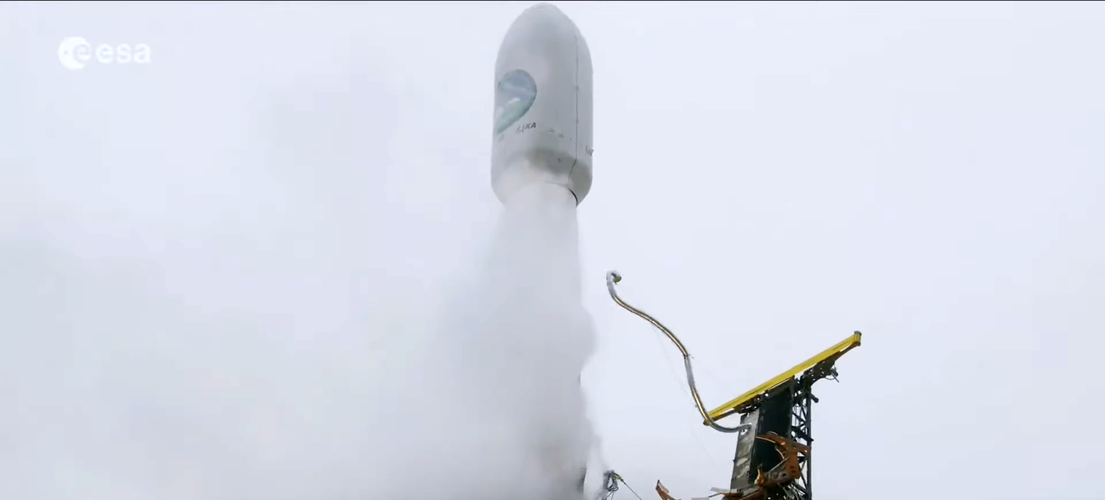
ESA’s EarthCARE satellite, poised to revolutionise our understanding of how clouds and aerosols affect our climate, has been launched. This extraordinary satellite embarked on its journey into space on 29 May at 00:20 CEST (28 May, 15:20 local time) aboard a Falcon 9 rocket from the Vandenberg Space Force Base in California, US.
SpaceX launch marks 40th for the Space Coast
Tuesday, 28 May 2024 19:38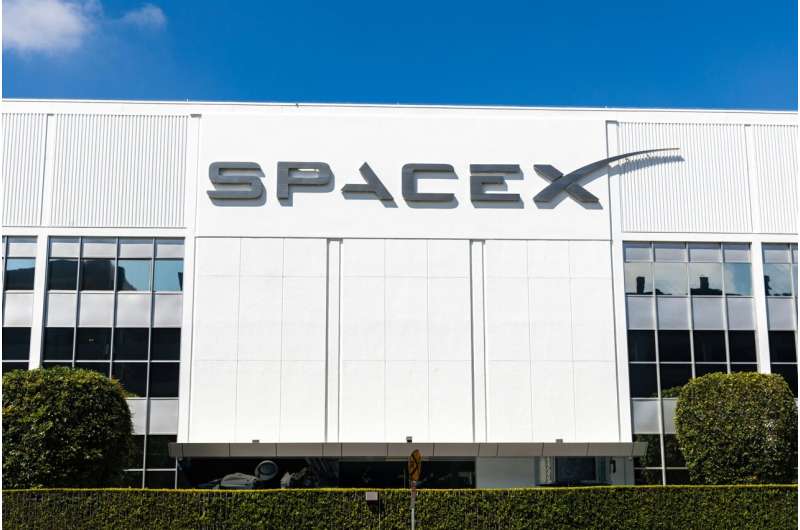
SpaceX sent up the 40th rocket launch from the Space Coast on Tuesday morning.
A Falcon 9 carrying 23 Starlink satellites lifted off at 10:24 a.m. from Cape Canaveral Space Force Station's Space Launch Complex 40. The launch was delayed from Monday, but SpaceX did not give a reason for why they stood down from that attempt.
The first-stage booster made its 10th flight with a bullseye recovery landing downrange on the droneship A Shortfall of Gravitas stationed in the Atlantic.
SpaceX has managed 38 of the 40 launches from either Canaveral or neighboring Kennedy Space Center this year, and plans are to turn around launch pads even quicker in the second half of the year so the Space Coast could top 100 launches for the 2024.
This was SpaceX's eighth launch from the Space Coast for May.
All of SpaceX's launches so far have been Falcon 9 launches, but the first Falcon Heavy launch of the year is slated to fly on June 25 carrying the GOES-U weather satellite for the National Oceanic and Atmospheric Administration.
United Launch Alliance flew the other two Space Coast launches with the first ever Vulcan Centaur launch in January and the final Delta IV Heavy launch in April.
What is Manhattanhenge and when can you see it?
Tuesday, 28 May 2024 18:27
Twice per year, New Yorkers and visitors are treated to a phenomenon known as Manhattanhenge, when the setting sun aligns with the Manhattan street grid and sinks below the horizon framed in a canyon of skyscrapers.
The event is a favorite of photographers and often brings people out onto sidewalks on spring and summer evenings to watch this unique sunset.
Manhattanhenge happens for the first time this year on May 28 at 8:13 p.m. and May 29 at 8:12 p.m., and will occur again on July 12 and 13.
Some background on the phenomenon:
WHERE DOES THE NAME MANHATTANHENGE COME FROM?
Astrophysicist Neil deGrasse Tyson coined the term in a 1997 article in the magazine Natural History. Tyson, the director of the Hayden Planetarium at New York's American Museum of Natural History, said he was inspired by a visit to Stonehenge as a teenager.
The future host of TV shows such as PBS' "Nova ScienceNow" was part of an expedition led by Gerald Hawkins, the scientist who first theorized that Stonehenge's mysterious megaliths were an ancient astronomical observatory.
It struck Tyson, a native New Yorker, that the setting sun framed by Manhattan's high-rises could be compared to the sun's rays striking the center of the Stonehenge circle on the solstice.
Successful engine test boosts Vega-C towards return-to-flight
Tuesday, 28 May 2024 13:55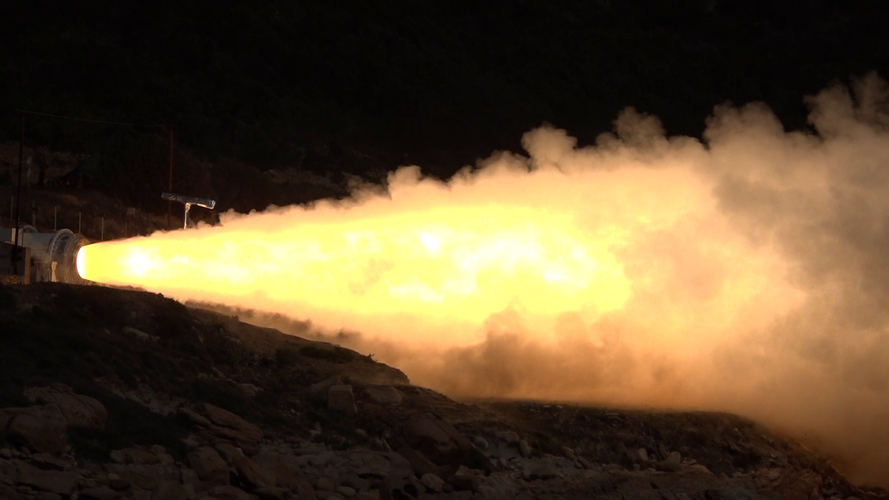
How privacy-preserving technology can advance satellite collision detection
Tuesday, 28 May 2024 12:00

Deep Blue Aerospace secures fresh funding ahead of first orbital launch
Tuesday, 28 May 2024 09:53




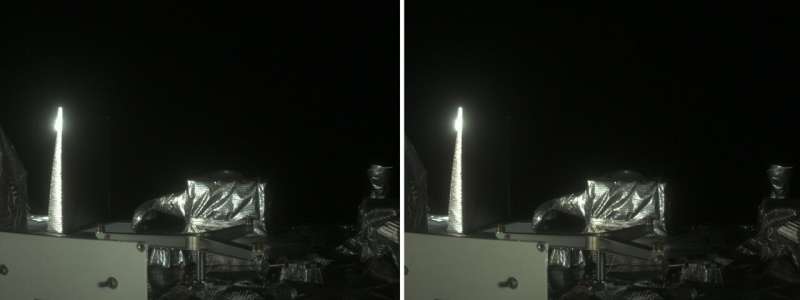




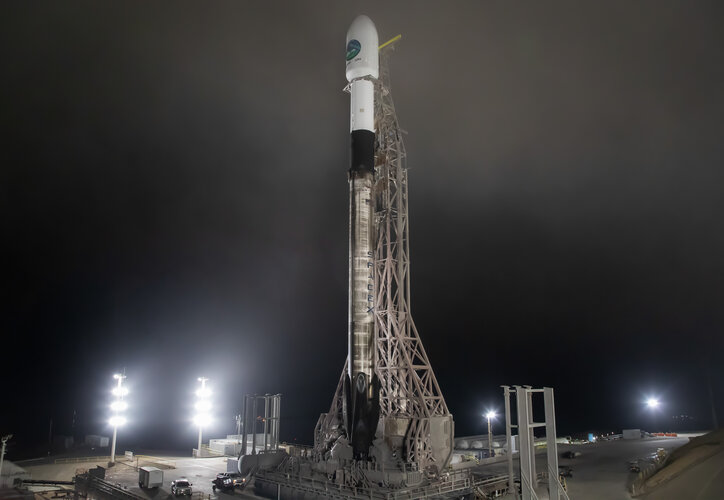 Image:
EarthCARE stands tall
Image:
EarthCARE stands tall